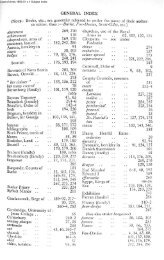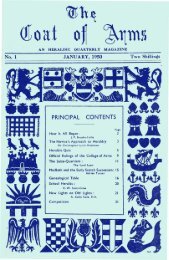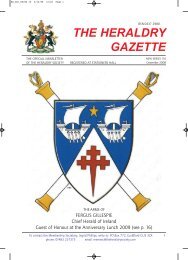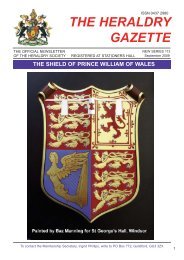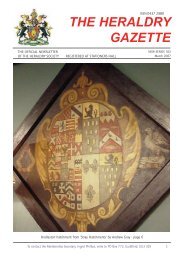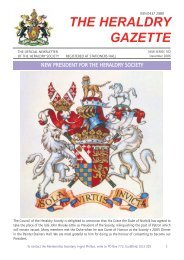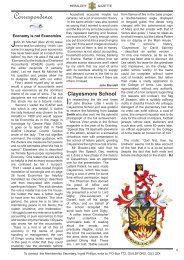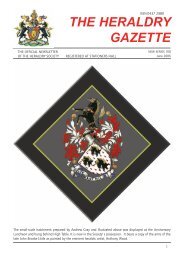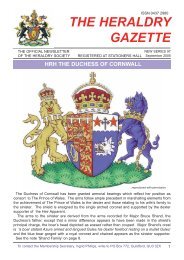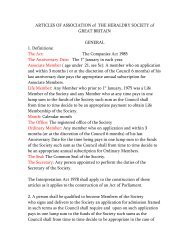Mar-06 Issue - The Heraldry Society
Mar-06 Issue - The Heraldry Society
Mar-06 Issue - The Heraldry Society
Create successful ePaper yourself
Turn your PDF publications into a flip-book with our unique Google optimized e-Paper software.
the United Kingdom. He was<br />
responsible for designing and<br />
engraving the reverse of the<br />
two pre-decimal shillings and<br />
the dodecagonal three penny<br />
piece. After decimalisation he<br />
produced the design for the<br />
reverse of the twenty pence<br />
piece which is still in use<br />
today.<br />
<strong>The</strong>se designs were<br />
4<br />
transferred to soft plaster of<br />
Paris, usually about eight<br />
inches across, which he then<br />
engraved. This engraving was<br />
cast into a positive and<br />
finished in low relief. An<br />
electroplate was made from<br />
this and set on a pantograph<br />
reducing machine, from which<br />
master punches in steel were<br />
milled. <strong>The</strong>se were used to<br />
stamp out the coins. He also<br />
designed several state seals<br />
including the seal of the British<br />
Medical Association, the seal<br />
of the Minister of State, the<br />
seal of H.M.Privy Council, that<br />
of the University of Aston, in<br />
Birmingham and the Royal<br />
<strong>Society</strong> of Arts. He was in fact<br />
<strong>The</strong> Manuscript Book recording the shields of arms in the bosses of the cloister fan vaulting at Canterbury<br />
Cathedral (see Part one, page 3 of the December 2005 <strong>Heraldry</strong> Gazette)<br />
Visit the website at www.theheraldrysociety.com<br />
the natural successor to<br />
George Kruger Gray, for<br />
whom he had great<br />
admiration, as the foremost<br />
designer of heraldic coins and<br />
seals in the United Kingdom<br />
After his wife died in 1982,<br />
Gardner found a disused<br />
chapel for sale near<br />
Robertsbridge in East Sussex.<br />
He converted it into a home<br />
with a studio and library. His<br />
last commission was to make<br />
a manuscript book for Eton<br />
College in 1990. He also wrote<br />
several books on his craft, <strong>The</strong><br />
Alphabet at Work, William<br />
Gardner's Book of Calligraphy,<br />
published in 1982, and had<br />
illustrated a manuscript on the<br />
history and craftsmanship of<br />
the Royal Arms, which has so<br />
far not appeared in print. He<br />
died on 28th December 1998<br />
aged 86. He is survived by two<br />
sons and a daughter.<br />
© ANTHONY WOOD



